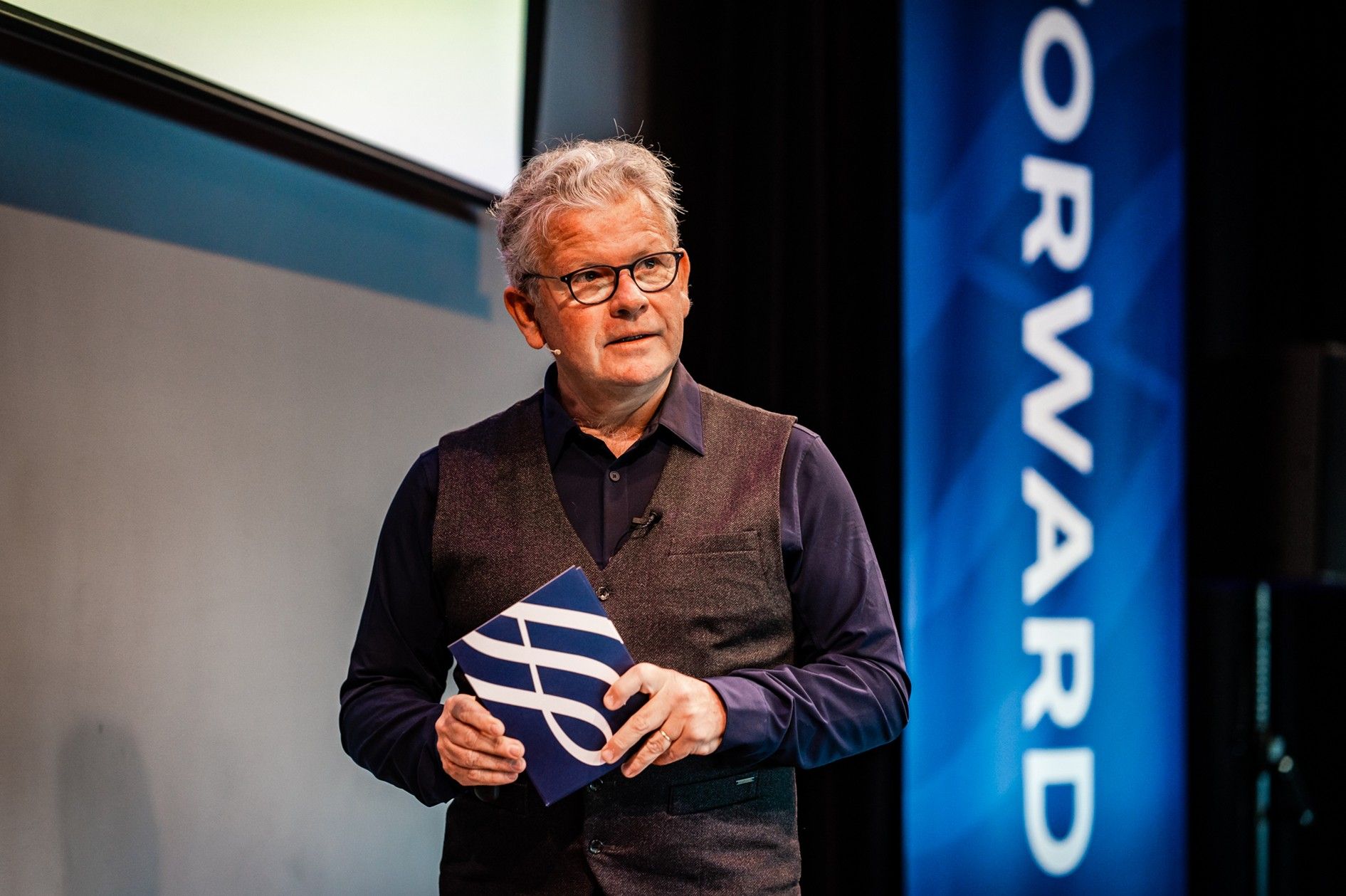Back to Basics: How Alexis von Hoensbroech is Steering WestJet’s Transformation
Calgary-based WestJet, Canada’s second-largest airline, is now focusing on being a low-cost carrier with a global long-haul arm under its new German CEO, Alexis von Hoensbroech
December 5, 2023
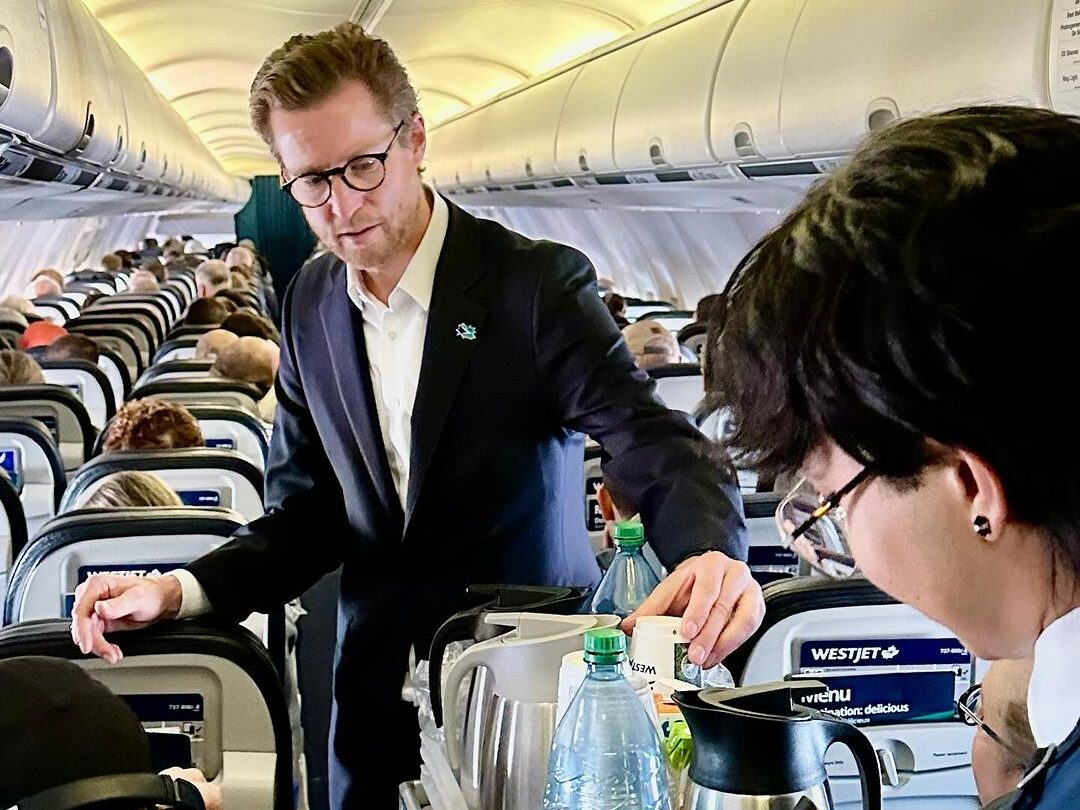
Photo: Courtesy of Alexis von Hoensbroech / Instagram @alexis_hoensbroech
WestJet, Canada’s second-largest airline, is now focusing on being a low-cost carrier with a global long-haul arm that thrives even in the winter under the leadership of its new German CEO, Alexis von Hoensbroech.
His arrival in Canada was an Arctic shock, as he eloquently puts it. “I had never been to Calgary and first came here in January 2022, as I had already signed my contract; of course, that was due to Covid. The outside temperature was down to -31°F (-35°C) when we landed. My wife wanted to turn around on the spot,” recalls Alexis von Hoensbroech about his beginnings as CEO of WestJet.
Canada’s number-two airline started operating as a low-cost carrier in Western Canada in 1996 and is based in Calgary, the biggest city in the province of Alberta. Von Hoensbroech, whose full name includes the title Count, stems from an ancient noble family from the Rhine area near Cologne in Germany.
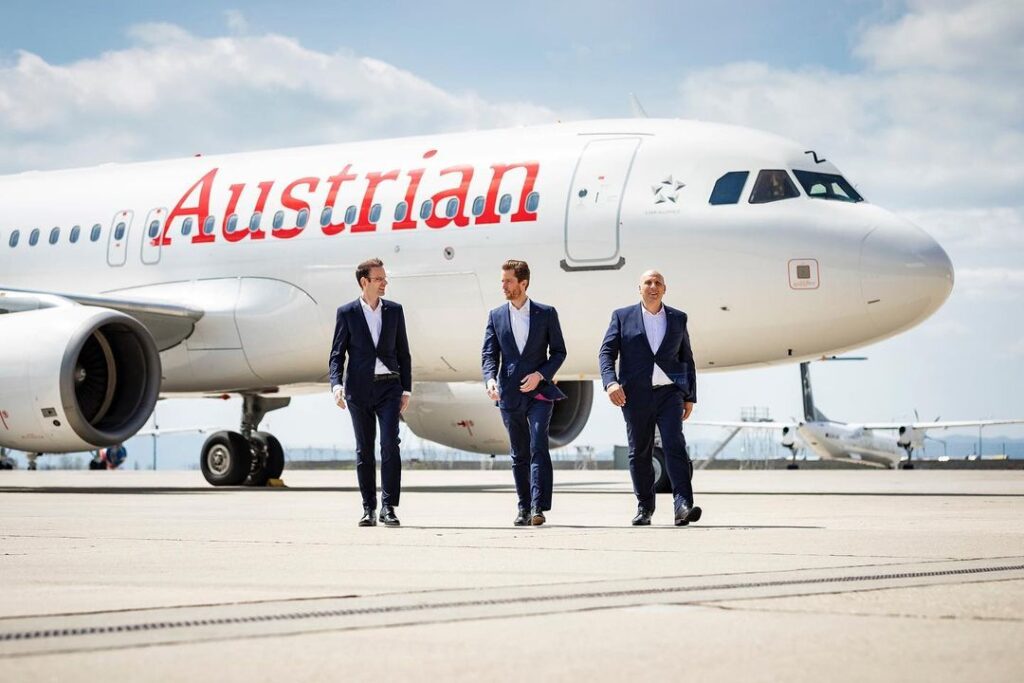
Photo: Courtesy of Alexis von Hoensbroech / Instagram @alexis_hoensbroech
The individual in question is a 53-year-old aviation professional who worked for Lufthansa Group for 16 years before moving to Canada. Since 2018, he has been the CEO of Austrian Airlines in Vienna, where he is considered a rising star. He holds a doctorate in astrophysics and has even been mentioned as a possible successor for long-term CEO Carsten Spohr.
Spreading his Wings
However, he was looking for a different kind of employer that would allow him to act more independently and not be tied to one of the biggest airline groups. “Given my age and what I think I am capable of doing, I was willing to take over a new role that would allow me to act more autonomously and with my own authority,” he says.
“I was looking for an environment that was more entrepreneurial than Lufthansa’s, where there is always a degree of bureaucracy and politics involved. I constantly felt constricted in my degrees of freedom,” von Hoensbroech tells Business Traveler at the airline’s modern Calgary headquarters.
A job offer from Canada, which he describes as “a super cool country,” came at the perfect time.
The private equity firm Onex had recently acquired WestJet and wanted to reposition the airline. Although WestJet had initially adopted a low-cost business model similar to that of Southwest Airlines, its market positioning had become increasingly unclear.
“They installed a Business Class, opened lounges, and flew long haul. I looked at that and thought: I have seen this movie plot before, and the equivalent was named Air Berlin, which was the same. They wanted to do everything for all people,” says von Hoensbroech.
This similarity to the failed German carrier made him skeptical: “My first reaction was: I’m not sure if I want to do that, as I already know how the movie ends,” he says.
Back to Basics
“Talking to the new private WestJet owners, I thought about re-focusing it back on the niche that originally made them strong, going back to the beginning.” That meant re-setting its main priorities on Western Canada again and reconnecting with the low-cost model.
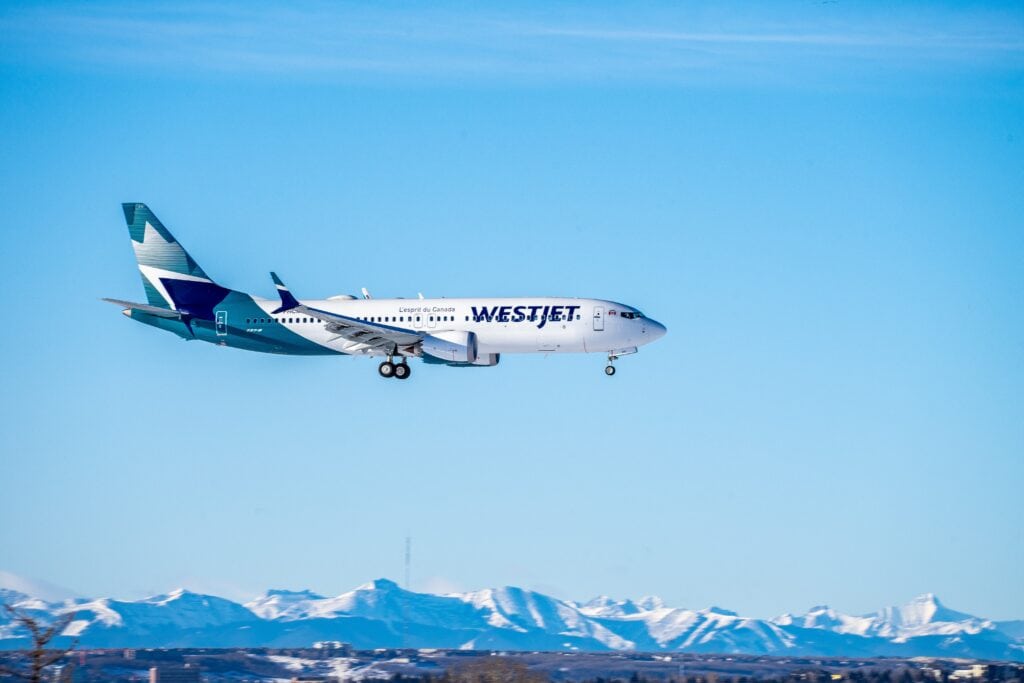
Photo: WestJet Boeing 737 MAX 8. Courtesy of Justin Hu / Unsplash
It all sounds great. But during von Hoensbroech’s first year at WestJet, he faced numerous challenges and unpleasant surprises that any airline executive would dread.
In 2022, a series of airline disruptions caused inconvenience and frustration for customers. In November, a major IT failure grounded operations overnight, and the situation worsened during Christmas, the peak travel period of the year. At the same time, severe winter storms hit the country, causing a week of chaos in Canadian air traffic. WestJet alone canceled almost 1,500 flights, leaving thousands of passengers stranded.
In May 2023, the CEO was able to broker a way out of a labor conflict with pilots, avoiding a last-minute strike. Alexis von Hoensbroech had passed all the acid tests and was keen to implement the new strategy.
Calgary: The Center of All
Von Hoensbroech’s plan was to make Calgary the center of gravity at WestJet again. Calgary is Canada’s fourth-largest city, with a population of 1.2 million. It is located in Alberta province, Canada’s powerhouse, and home to the entire oil and gas industry.
But geography is also helpful. “You get to Calgary either by aircraft – or not at all. There are no train or bus links; by car, you are on the road for four days from Toronto, which is unimaginable for a European. That means there are significantly more flights per capita here than, for example, in Vienna,” says the former Austrian Airlines CEO.

Photo: WestJet. Courtesy of Michael C / Unsplash
Von Hoensbroech simplified WestJet’s brand by integrating its ultra-low-cost subsidiary, Swoop, into the mainline as the first step. Swoop was launched in 2018, and its 18 Boeing 737s were added to the mainline fleet, which now consists of approximately 122 737s (including aircraft from leisure carrier Sunwing, which WestJet acquired).
Over the next five years, WestJet plans to add around 80 more Boeing 737s to its fleet.
Air Canada, which handles almost half of the domestic traffic in Canada, has recently reduced its operations in Western Canada. In response, WestJet has also given up many routes and frequencies in the east. This strategy of dividing the country has led to criticism from some who accuse both airlines of creating an oligopoly.
The Chamber of Commerce in Edmonton is one such critic. However, von Hoensbroech argues that competition is as intense as it has been in decades.
Long Haul Premium
WestJet’s long-haul business with its seven-strong Boeing 787-9 fleet is quite at odds with the new strategy, seemingly a leftover of bigger, pre-pandemic ambitions.
The Dreamliners have dense cabins with 320 seats installed, including just 16 top-notch lie-flat seats in a small Business Class cabin, easily matching premium standards found on global carriers.
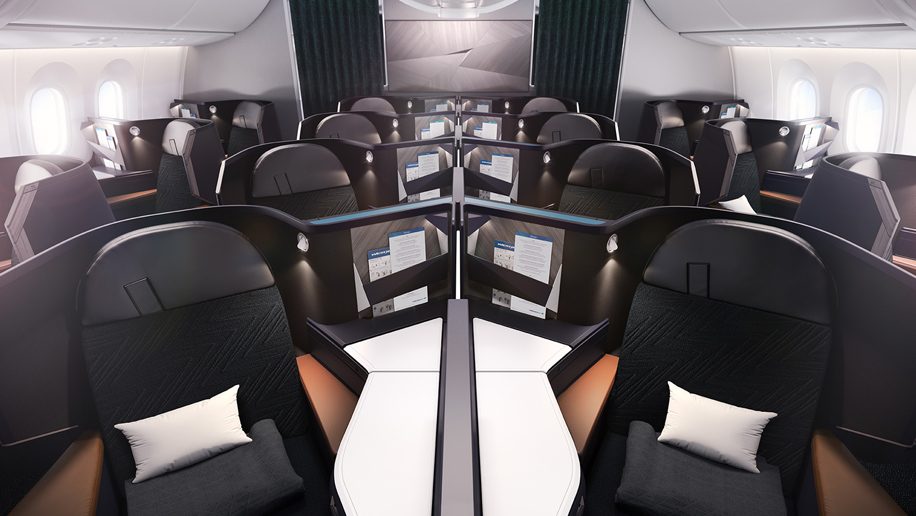
Photo: Business Class. Courtesy of WestJet
“For us, summer and winter mean an equally booming tourist business; this is unique in the global industry,” von Hoensbroech explains. “People flock to Canada in summer, while in winter, they want to escape the cold. That’s a gigantic business – this winter, we will fly over four million Canadians to the American sunbelt,” the CEO points out. “That is the reason why we might be able to operate Boeing 787s profitably long-term, as possibly the only low-cost airline.”
According to von Hoensbroech, long-haul is not a strategic business but a purely opportunistic one, “and the flights are currently selling like hotcakes,” he enthuses. “Our first Asia route to Tokyo was profitable from day one.”
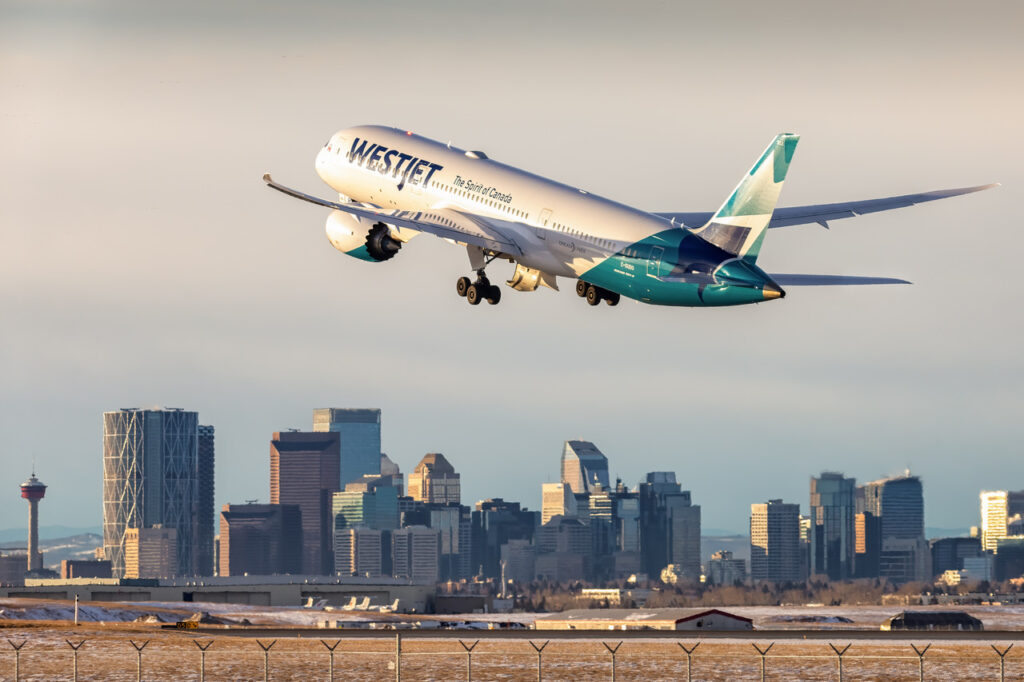
Photo: Boeing 787-9 Dreamliner. Courtesy of WestJet
WestJet also flies year-round from Calgary to Paris-CDG and London-Heathrow, plus half a dozen summer-only routes.
The carrier operates 19 year-round destinations in the US and nine seasonal routes. WestJet benefits from the lack of US low-cost carriers in the Canadian market, except for JetBlue serving Vancouver.
While one major market for WestJet down south is the sunseeker segment, the other is connecting to major cities like Boston or San Francisco. “There we grow mostly through the close partnership with Delta but being focused on leisure, this is the more challenging market for us, as it’s driven by business travel,” admits von Hoensbroech.
In any case, he thinks big, announcing: “We plan to double in size within the next five years.”
Now, that’s a bold plan.


